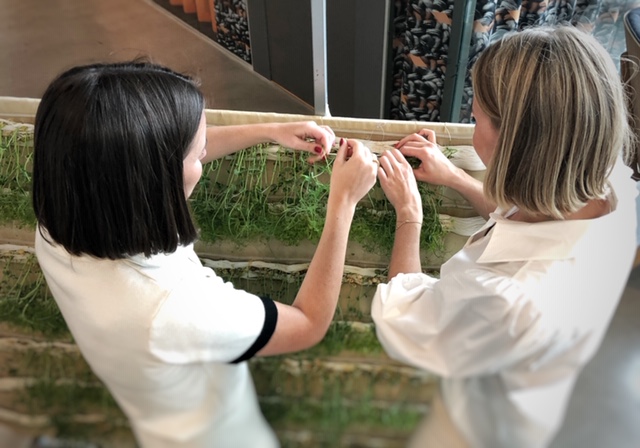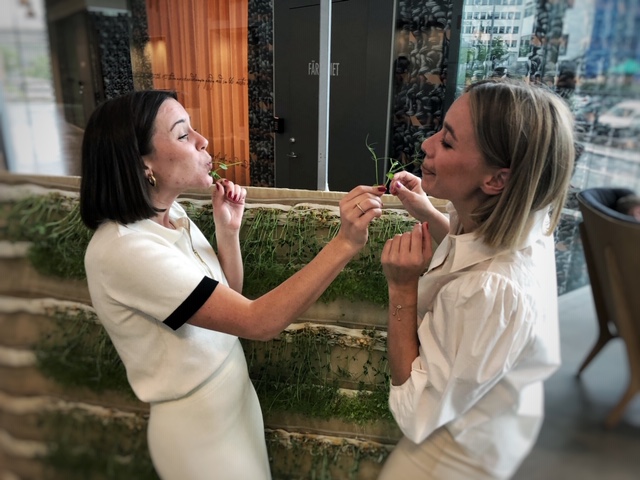Textile engeneers create green walls
Textile engeneering students Rebecca Cederhage and Rebecka Johansson presented their work Green walls at The Swedish School of Textiles on the 4th of june.

The work was to examine how the functional properties of polyesters can be used to facilitate urban cultivation and whether it is possible to weave with plastic hose.
The idea for the work comes originally from Nils-Krister Persson, who is Associate Professor and Head of Smart Textiles Technology Lab and Elin Näsström, Project Manager at Smart Textiles.
Nothing obvious from the start
Already when the idea was presented, Rebecka and Rebecca had started thinking about how they could intergrate their own interest in the environment together with textile.
Their basic idea was to unite textiles and, as they describe it, something alive that could eventually lead to something practical.
For a while, they were in the process of dyeing textiles with plant color but idea aside. Instead, they went for the Smart Textiles idea that included more greenery on the vertical.
The final work for the three-year textile engineering degree at the Swedish School of textiles in Borås could begin.
– The support from Smart Textiles during the work has been invaluable. Nils-Krister has probably spent more time on our project than he was supposed to have. Elin has also been a great support, says Rebecka Johansson.
Weave with hose difficult step
During time the students have never doubted that it is possible to grow greens in polyester, says Rebecka Johansson. The question was what type of plant substrate would work best.
-We knew we could make a plant wall but had doubts about how the construction would look. And then there was uncertainties about whether we would succeed in weaving a hose of 5 mm in outer diameter. Usually you weave with yarns that are only 0.5 millimeters in diameter, says Rebecca Cederhage.

The peas have grown into …
… yummy, crispy pea sprouts .
And quite rightly – at the weaving machine they encountered some resistance. The Swedish School of Textiles is cautious of its machines.
In order to get the opportunity to try to weave they had to be persistent and under strict supervision. They also had to promise to stop the weaving process if the machine indicated difficulties.
But it turned out to bo possible to weave with hose. After ten weeks they could proudly show off the plant wall. And it had fresh crispy pea shoots wich had grown on it.
